Ayhan, Ebubekir (2024) Enhancing Customer Churn Prediction in the Telecommunications Sector: Benchmarking Neural Networks Against Traditional Machine Learning Models. Masters thesis, Dublin, National College of Ireland.
Preview |
PDF (Master of Science)
Download (1MB) | Preview |
Preview |
PDF (Configuration Manual)
Download (2MB) | Preview |
Abstract
Customer churn prediction is very crucial in the telecommunications industry due to the high cost of gaining new customers and the current competitive environment. This study aims to investigate how accurately newly developing neural network technologies can make predictions compared to old traditional methods and to examine the results. The study uses the CRISP-DM methodology to examine a Kaggle dataset of telecom customers. The dataset contains details about service usage and demographics that are essential for churn prediction. Using RapidMiner, extensive cleaning and transformation procedures are part of the data preprocessing process. Then, six machine learning models are implemented and benchmarked: Support Vector Machine (SVM), Na¨ıve Bayes, Random Forest, knearest Neighbors (k-NN), Random Networks, and Deep Learning. The results show that SVMs and neural networks perform better than other models, with accuracies of 78.76% and 80.02%, respectively. These models demonstrate strong recall and precision metrics for both retained and churned customers, highlighting their efficacy in churn prediction tasks. Conversely, Na¨ıve Bayes exhibits imbalanced recall rates and lower accuracy (44.31%), underscoring its limitations in this particular context. The results highlight how crucial it is to choose models that are suitable for the subtleties of telecom churn prediction. The industry will be affected by the use of precise churn forecasts to create proactive retention plans that will raise customer satisfaction and lower churn rates. Subsequent investigations may examine supplementary customer metrics and sophisticated modeling methodologies to enhance prognostic precision and practicality in actual telecom environments.
| Item Type: | Thesis (Masters) |
|---|---|
| Supervisors: | Name Email Del Rosal, Victor UNSPECIFIED |
| Subjects: | Q Science > QA Mathematics > Electronic computers. Computer science T Technology > T Technology (General) > Information Technology > Electronic computers. Computer science H Social Sciences > HF Commerce > Marketing > Consumer Behaviour Q Science > Q Science (General) > Self-organizing systems. Conscious automata > Machine learning H Social Sciences > HD Industries. Land use. Labor > Specific Industries > Telecommunications Industry |
| Divisions: | School of Computing > Master of Science in Artificial Intelligence for Business |
| Depositing User: | Ciara O'Brien |
| Date Deposited: | 02 Jul 2025 13:22 |
| Last Modified: | 02 Jul 2025 13:22 |
| URI: | https://norma.ncirl.ie/id/eprint/7982 |
Actions (login required)
 |
View Item |

 Tools
Tools Tools
Tools